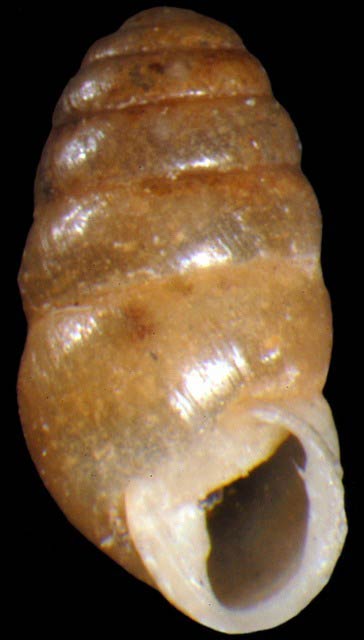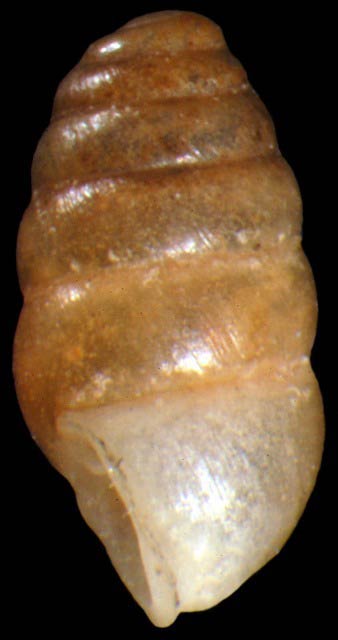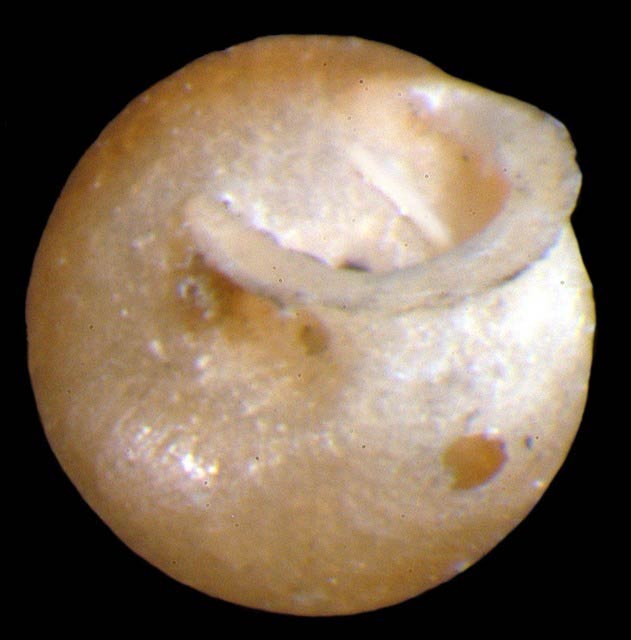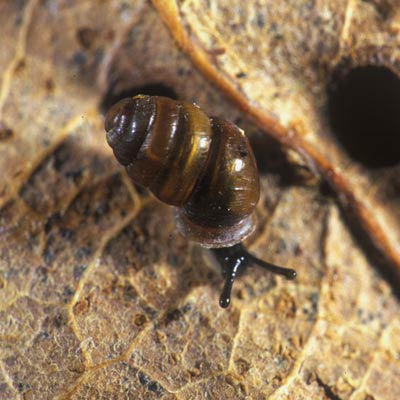Lauria cylindracea
|
Lauria cylindracea. (Photo: © G. Rosenberg, Academy of Natural Sciences) |
|
Lauria cylindracea. (Photo: © G. Rosenberg, Academy of Natural Sciences) |
|
Lauria cylindracea. (Photo: © G. Rosenberg, Academy of Natural Sciences) |
|
Lauria cylindracea. (Photo: © Dr. Roy Anderson, MolluscIreland) |
|
Lauria cylindracea. (Photo: © Dr. Roy Anderson, MolluscIreland) |
Family
Pupillidae
Species
Lauria cylindracea (da Costa, 1778)
Common name
Moss snail
Description
The shellShell:
A hard, inflexible, calcareous or chitinous structure that vary in size and may either completely encasing the animal, covering some part of it or be internal.
of this species is 3-4 mm high and 1.8 mm wide with 5-6 whorlsWhorls:
Pleural of whorl. A whorl is a complete spiral turn/growth of the shell of a mollusc. The whorls are counted from the apex outwards.
. The brown shellShell:
A hard, inflexible, calcareous or chitinous structure that vary in size and may either completely encasing the animal, covering some part of it or be internal.
of this species is transparent and glossy. It is pupa-shaped with a low spireSpire:
All the coils (whorls) of a shell above the body whorl.
. The apertureAperture:
The major opening of a shell that the body of the animal may be retracted.
(mouth) may have a papery mucus membrane and may or may not have a tooth. The apertural margin is white, sharp and reflected. The umbilicusUmbilicus:
A navel-like indentation or depression in the center of the shell. It may be described as open (inside of columella visible), partially closed (partly covered by base of aperture) or completely closed (not visible). The width of the umbilicus is a measure of its greatest diameter.
(navel) is open and narrow. The body of the animal is dark with pale sides and footFoot:
The muscular organ on the undersurface of the body of a mollusc upon which the animal rests or uses to crawl.
. The animal characteristically moves with the shellShell:
A hard, inflexible, calcareous or chitinous structure that vary in size and may either completely encasing the animal, covering some part of it or be internal.
held in an almost vertical position.
Native range
Western Europe and Mediterranean region
Distribution
North America:
- U.S.: Washington
- Canada: British Columbia
Caribbean: Jamaica
Europe
Ecology
This species never lay eggs; instead, it produces living young (ovoviviparous). The juveniles have 2-2.5 whorlsWhorls:
Pleural of whorl. A whorl is a complete spiral turn/growth of the shell of a mollusc. The whorls are counted from the apex outwards.
. This species occurs in forests, meadows and gardens, but never where the humidity is high.
Synonyms
- Turbo cylindraceus Da Costa, 1778
- Pupa umbilicata Draparnaud, 1801
- Pupa sempronii Charpentier, 1837
- Pupa dilucida Rossmassler, 1837
- Lauria cymmetrica Puzanov, 1925
References
Anderson 2005Anderson 2005:
Anderson, R. 2005. An annotated list of the non-marine Mollusca of Britain and Ireland. Journal of Conchology 38: 607-637.; Hausdorf 2007Hausdorf 2007:
Hausdorf, B. 2007. Revision of the American Pupisoma species (Gastropoda: Pupilloidea). Journal of Natural History 41(21-24): 1481-1511.; Kantor et al. 2009Kantor et al. 2009:
Kantor, Y.I., M.V. Vinarski, A.A. Schileyko and A.V. Sysoev. 2009. Catalogue of the continental mollusks of Russia and adjacent territories. Version 2.1. (Accessed online July 20, 2010); Kerney et al. 1979Kerney et al. 1979:
Kerney, M.P., R.A.D. Cameron and G. Riley. 1979. A field guide to the land snails of Britain and North-west Europe. Collins, London. pp. 288.; Rosenberg and Muratov 2006Rosenberg and Muratov 2006:
Rosenberg, G. and I.V. Muratov. 2006. Status report on the terrestrial Mollusca of Jamaica. Proceedings of the Academy of Natural Sciences of Philadelphia 155: 117-161.






